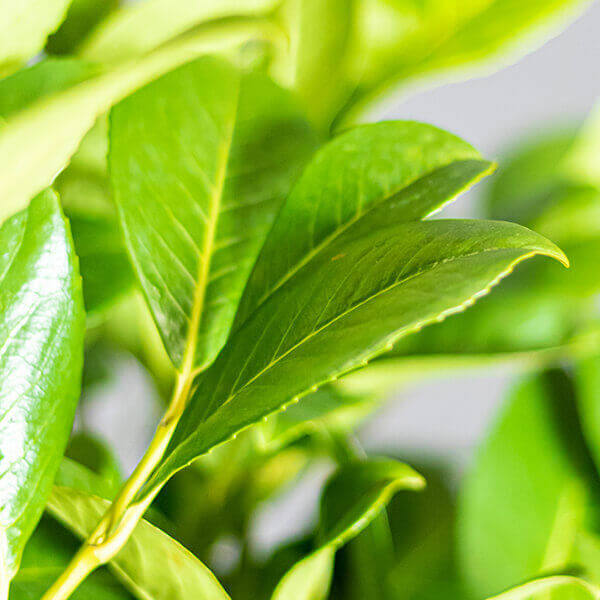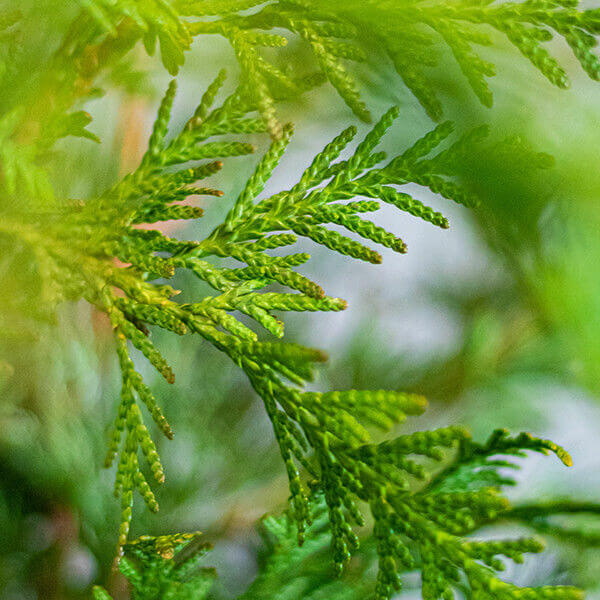Hedging Plants For Tall Screens
Hedging Plants For Tall Screens
Blog Article
Hedge Plants For Formal Gardens
Improve your garden's allure with lavish hedge varieties such as Yew (Taxus), Thuja, Laurel, Photinia, and Bamboo, commemorated for their structural integrity and ecological benefits.
Yew and Thuja offer evergreen protection and winter durability, while Laurel uses fast development and broad, aromatic leaves.
Photinia adds seasonal beauty with its vibrant red foliage, and Bamboo lends a low-maintenance, peaceful atmosphere.
These hedges improve air quality, minimize sound, and create tranquil, private areas.
Correct planting, spacing, and maintenance guarantee energetic development and ecological harmony.
Check out how these lavish varieties can elevate your garden's charm and wellness.
Secret Takeaways
Change Your Garden With Lush Hedge Ranges
- Select Yew for its thick, evergreen development and unparalleled longevity.
- Select Laurel for its quick development and broad leaves, ensuring quick privacy.
- Choose Photinia for its dynamic seasonal foliage, which turns a striking dark red.
- Use Bamboo for a low-maintenance, winter-hardy hedge with visual appeal.
- Area plants 2-3 per meter and prune frequently for optimum development and health.
Popular Hedge Plants
When changing a garden with lavish hedge varieties, it's vital to consider popular hedge plants such as Yew, Thuja, Laurel, and Photinia due to their unique characteristics and benefits.
Yew (Taxus) is highly esteemed for its durability and dense, green growth, making it a prime option for enduring landscapes.
Thuja is kept in mind for its evergreen foliage and robust winter season durability.
Photinia includes seasonal vibrancy with red leaves that darken over time, producing vibrant visual appeal.
Laurel provides fast growth and fragrant, broad leaves, perfect for fast personal privacy.
Furthermore, Bamboo is an outstanding choice for ambiance, using a low-maintenance, winter-hardy choice that improves the garden's aesthetic with its elegant, swaying walking canes.
These choices accommodate a variety of horticultural needs and choices.
Advantages of Garden Hedges
Garden hedges provide a wide variety of benefits, making them an important addition to any landscape. These natural barriers are economical to execute and provide significant wind defense, improving air flow and contributing to noise reduction. The thick foliage of hedges like Thuja and Beech guarantees privacy by blocking exposure, creating a tranquil and secluded environment.
Hedges likewise play an essential role in microclimate guideline, providing a steady environment that promotes plant development and lessens temperature changes. Their intricate leaf structures filter toxins, improving air quality and adding to a healthier garden community.
Moreover, hedges master sound reduction, soaking up and deflecting sound waves to lower ambient sound levels. This dual performance of providing both acoustic and visual privacy improves the overall serenity and aesthetic appeal of any garden.
Planting and Upkeep Tips
For an effective hedge, meticulous preparation of the planting area is vital. Ensure the soil has appropriate pH and drain to support strong root development.
Space the plants properly for the chosen species. Water the hedge regularly during its preliminary development phase, adjusting as required with seasonal modifications.
Implement a methodical insect control and illness avoidance strategy, using natural or chemical treatments when essential. Regularly inspect for aphids, mites, and fungal infections.
Apply mulch to keep wetness and reduce weeds. Seasonal pruning promotes thick growth and air circulation, important for plant health.
Following these guidelines will help you cultivate a dynamic, properly maintained hedge that boosts the beauty of your garden.
Spacing and Trimming Guidelines
Spacing and Trimming Guidelines
Proper spacing and trimming are crucial for cultivating healthy, visually appealing hedges. Adequate spacing ensures each plant receives sufficient nutrients, light, and airflow.
Follow these guidelines for optimum hedge upkeep:
- Spacing: Position hedge plants 2-3 plants per meter to encourage robust growth.
- Pruning Strategies: Routine pruning is necessary for keeping wanted hedge height and shape. Cut brand-new development in summer season and cut down older wood during winter.
- Seasonal Care: Change cutting techniques and schedules according to seasonal requirements to guarantee plant health.
- Hedge Height: Routinely screen and trim to maintain the wanted hedge height and attain consistent aesthetic appeals.
Complying with these actions will ensure your hedge flourishes, enhancing both the appeal and performance of your garden.
Selecting the Right Hedge
Choosing the Right Hedge
Picking the proper hedge involves evaluating aspects such as mature height, foliage density, and environmental strength. Successful hedge plant choice needs understanding each types' growth attributes and site-specific versatility.
For instance, Yew (Taxus) uses outstanding longevity and thick growth, while Thuja is significant for its winter strength. Furthermore, thinking about maintenance requirements is vital; fast-growing species like Laurel or Privet need regular cutting, whereas low-maintenance options like Bamboo or Ivy may be more suitable for those seeking minimal maintenance.
Environmental aspects such as soil type, light availability, and wetness conditions should also assist the selection procedure. This careful method makes sure the chosen hedges will prosper, offering both visual and functional benefits to the garden landscape.
Delivery and Planting Suggestions
To ensure your hedge plants flourish, they need to be delivered by specialized carriers and planted immediately upon arrival.
Follow these necessary steps for successful planting:
- Soil Preparation: Improve the soil with natural matter to improve drainage and nutrient material.
- Planting Depth: Develop a trench two times the width and equal to the depth of the root ball.
- Watering Techniques: Water completely after planting, keeping the soil regularly wet however not saturated.
- Mulching: Apply a layer of mulch to retain moisture and suppress weeds.
Client Assistance and Service
Offered the vital role of timely assistance in horticultural pursuits, our customer support team is offered 6 days a week through telephone, e-mail, and social networks to use skilled advice and swiftly address any concerns. Their dedication to quick response times ensures consumer satisfaction by resolving queries related to plant health, optimal planting approaches, and maintenance schedules.

This detailed support group, enhanced by an excellent 9.3/ 10 customer rating, highlights our commitment to enhancing the gardening experience for each client.
Often Asked Questions
For How Long Does It Take for Hedge Plants to Establish?
Hedge plants normally need one to three years to become completely established, with the precise duration varying by species and growing conditions.
Effective care throughout this important duration is necessary for robust development. Constant watering, watchful weed control, and suitable fertilizer application are pivotal in promoting strong root development.
For instance, fast-growing types like Laurel might establish faster, while slower-growing varieties such as Yew may take longer. Thorough upkeep accelerates the establishment procedure, leading to thick and healthy hedges.
What Are the Best Hedge Plants for Personal Privacy?
The concern of the very best hedge plants for privacy involves examining evergreen and deciduous alternatives.
Evergreen hedges like Thuja, Laurel, and Cypress provide year-round coverage, guaranteeing constant personal privacy.
In contrast, deciduous hedges such as Beech offer seasonal privacy, shedding leaves in chillier months.
Secret upkeep pointers for personal privacy hedges consist of routine cutting, fertilizing in Browse around this site spring, and proper spacing-- typically 2 to 3 plants per meter.
Additionally, consistent watering and diligent weed removal are essential for promoting healthy, dense growth.
Can Hedge Plants Attract Wildlife to My Garden?
Yes, hedge plants can attract wildlife to your garden by providing essential advantages like shelter, food, and nesting websites, therefore boosting regional biodiversity. Yew, holly, and laurel are exceptional for bring in birds, while ivy supports a range of insects.
However, it is necessary to keep in mind that there are some disadvantages, such as increased maintenance to handle bugs and regular upkeep. Thoroughly choosing and maintaining hedge ranges can assist balance these disadvantages and benefits, eventually fostering a dynamic and sustainable community in your garden.
Exist Any Flowering Hedge Plants Available?
Yes, there are flowering hedge plants readily available that can enhance the charm of your garden.
For instance, Elaeagnus, also called Olive Willow, produces fragrant white flowers in the fall, adding a touch of sophistication.
Photinia, another popular choice, showcases dynamic red leaves that grow into an abundant green, creating a vibrant visual result throughout the seasons.
To ensure these plants flourish, it's important to practice proper pruning methods and seasonal upkeep, such as cutting new growth in the summertime and cutting down in the winter season.
These measures will help maintain the health and aesthetic appeal of your flowering hedges.
How Do I Prevent Insects in My Hedge Plants?
To prevent insects in hedge plants, utilize natural insect control approaches and keep correct hedge care. Present beneficial insects like ladybugs, which prey on harmful bugs, to develop a well balanced environment.
Frequently check your hedges for indications of problem and without delay get rid of any afflicted parts to prevent the spread. Guarantee the health of your hedges by applying balanced fertilizers and supplying appropriate water.
Make use of mulching to keep soil moisture and proper spacing to reduce plant tension and promote robust development. These practices jointly help in reducing pest concerns and preserving a healthy hedge.
Conclusion
In essence, selecting the right hedge ranges such as Yew, Thuja, and Laurel can change any garden into a relaxing haven. These plants provide year-round plant, improve aesthetic appeal, and deal practical benefits like sound reduction and wind protection.
Correct planting methods, accurate spacing, constant watering, and seasonal trimming are vital for optimum growth.
Dependable shipment services and professional customer assistance ensure a smooth experience from purchase to planting, making it simpler than ever to raise your outdoor area.
Garden hedges provide a plethora of advantages, making them a valuable addition to any landscape. These natural barriers are cost-efficient to implement and supply considerable wind defense, improving air blood circulation and contributing to noise decrease. The dense foliage of hedges like Thuja and Beech makes sure privacy by blocking visibility, producing a remote and serene environment.

Pruning Strategies: Regular pruning is essential for maintaining wanted hedge height and shape. Trim new development in summertime and cut back older wood throughout winter season.
Report this page